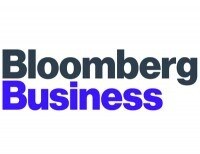What is Anti-PR? The Results-Driven Approach Tech CEOs Choose Over Traditional PR
Anti-PR is JOTO's crisis management-inspired methodology that helps $2.5M-$100M tech companies in FinTech, SaaS, and HealthTech appear bigger, more credible, and educate their markets faster than traditional PR agencies.
“Anti-PR is really the difference between the existing apathy of the industry publicizing fluffy, no-result PR vs. our intolerance of mediocrity and our demand, skill and mastery in obtaining results.”
“I hate PR” is the general consensus among fast-moving companies, industry leaders, innovative startups and disruptive CEOs.
It’s also the exact words you’ll hear from Karla Jo Helms, Founder and Chief Evangelist for JoTo PR.
PR Redefined
As Karla Jo states:
“The PR industry has lost touch with reality resting on past accomplishments and failing to deliver the results today’s companies need.
“It’s simple: there’s way too much ‘smoke and mirrors’ in the PR world and not enough delivery of results.
“We exist to change that standard and revolutionize how PR is not only perceived but in terms of measurable ROI. As a business owner, I know every dollar must work hard for my company so I share that sentiment with our clients.”
Too often in the PR world, 6 months go by with one or two stories and PR firms respond with “we need more information” or “we’re working on it.”
Crisis Averted
We come from the Crisis Management side of the world, where time is not a luxury. We apply all that we learned in Crisis Management to give every client the kind of results and exposure they were seeking in the first place.
Unlike TV dramas, we don’t wait for some scandal to pull out all the stops to get you the press and continual coverage you need. (Actually we consider it a scandal if you don’t get press and respond accordingly.)
No excuses. No smoke and mirrors.
We convert PR from a “necessary evil” to “an integral part of your growth strategy” clients and CEOs rely upon and gladly report to their stakeholders.
Our motto: “PR isn’t the answer. Results are.”
We get you the Exposure You Need
See who listens to JoTo PR Disruptors:
CNBC, Forbes, Inc. Magazine, NBC News, Reddit, USA Today, US World & News Report, Bloomberg Business, MarketWatch, Tech Target, Becker’s Hospital Review, Modern Healthcare, Financial Times, CNNMoney, The Wall Street Journal, The Economist, Yahoo Finance, TechCrunch.









What Is Anti-PR And How Does It Enhance Marketing?
Anti-PR is the fuel that runs your marketing campaign. Among the many benefits of incorporating a comprehensive Anti-PR program into your marketing program is that it creates all-important credibility by:
1) Lowering your cost per lead. An informed consumer is easier to find and to close.
2) Increasing your marketing ROI (return on investment). PR has a wide reach and can penetrate your marketplace by publicizing your story and your good works.
3) Augmenting the value of your business. Anti-PR gives you a step-up on the competition: you will win a warm spot in the hearts of your customers, thus improving your overall value in the market.
Anti-PR does what marketing cannot do. If done right, it pervades every aspect, every nook and every cranny so that your marketing strategy can be implemented without the emotional barriers that inhibit customers from purchasing, calling, or doing whatever else you want them to do.
To be blunt, if those emotional barriers are removed, your marketing can actually work.
Anti-PR Services Will Positively Impact Your Bottom Line
Let’s break down the entire real public relations process to allow you to have an inside view of how PR services work and come together to improve your image, your brand and—most importantly—your bottom line.
In order to fully understand PR, you should familiarize yourself with the public relations definitions we use at the JoTo PR firm:
Anti-Public Relations
Public Relations is the practice of creating, managing and changing the flow of information between an organization or individual and the target market(s) through exposure in credible outlets, and by offering a third-party legitimacy that advertising does not have.
Anti-PR does this, but on steroids.
By coordinating with a company’s or organization’s marketing effort, the JoTo Anti-PR agency can position your message to generate a broader impact. Like it or not, the public views a third-party endorsement as much more credible than a paid advertisement, no matter how much you paid for that ad or commercial.
Goodwill
Goodwill is measured by the intangible (and sometimes very tangible) returns from the positive relationship a business has created with its customers, prospects and the community.
Referrals to your business are directly proportional to the amount of goodwill that the people who are giving referrals have towards your business. These days, goodwill is money in the bank, and is sometimes even more important.
Anti-PR Campaign
An Anti-PR campaign is a strategic promotional plan intended to create goodwill for a person or institution in order to make people more interested and more comfortable to do business with you. End result? More overall business.
Press Release
The press release communications tool used in public relations is directed towards the members of the media for the purpose of announcing to the public anything deemed newsworthy. Press releases can be issued on a variety of topics, follow a strict format, and provide journalists with basic information needed to develop a news story.
News Release
The news release is an interchangeable term with press release, but JOTO PR Disruptors uses this terminology to differentiate a fluffy, 1st-party, braggadocios communication from a hard-news, new news release specifically for the media that positions your story, your news and your company right smack in the middle of breaking newsworthy information. News releases can be issued on a variety of topics; they too follow a strict format, and provide journalists with inside information to develop a disruptively innovative news story.
Social Media
Social Media is the ability to harness word-of-mouth advertising to technology, resulting in an exponentially positive effect for a business, individual or organization. It’s like grass roots advertising on an entirely new and much wider plane.
Social Media has the unique power to multiply one-on-one conversations into the chain reaction of many-to-many dialogues by giving people the power to transform information from mere content readers into publishers. Think of it as word-of-mouth advertising to a much greater degree!
Marketing
Marketing refers to the various processes involved in promoting, selling and distributing a product or service. The term evolved from its original meaning, which literally referred to going to the market to buy or sell goods or services.
Marketing creates demand—and is the necessary complement to Anti-PR—just like sales is the essential component to marketing.
Anti-PR > Marketing > Sales is the Intelligent Promotional Cycle.
Anti-PR IN 90 SECONDS
Real, zero-bullsh*t PR insight from the JOTO PR Disruptors Chief Evangelist and Anti-PR Strategist herself, Karla Jo Helms, in less than two minutes.
Yes, you read that right.
In each video, the Chief will be speaking truth to the businesses of public relations, marketing, the media, and more. Actual knowledge you can use.
We will be adding new Anti-PR in 90 Seconds videos—new insights for you—every week. Sign up below to receive these videos straight to your inbox.
FAQs (frequently asked questions)
Public Relations correctly done is highly effective for most businesses. It is significant when a company, product or service cannot establish and maintain a notable differential advantage by itself, i.e., when you have many competitors. When this is the case, you can still separate yourself out from the pack by emphasizing your organization’s unique qualities or values. As an example, your company may be a great place for people to work, be more public spirited, be more philanthropic, have more client successes, or just be better at consistently telling your story and creating news around what you do.
PR should be a standard part of any organization that wants to thrive. Generating goodwill and publishing your good works will help any business.
As with any type of publicity or marketing, PR works best when your company name is seen on a regular basis. Because some press releases will work better than others, you must follow a strategy of high-quality professional writing and editing in tandem with sending out press releases on a regular basis. Likewise, press releases for the sake of press releases is not effective—a strategic communications plan must have a process for making those releases turn into media opportunities. JoTo PR will work out a schedule and a process that will yield the best results for you.
In essence, publicity is the act of making a timely suggestion to a journalist or media contact that then leads to the inclusion of an organization, product or individual in a story. Online social media, newspapers, radio shows, magazines and cable/network programs have large amounts of space to fill, and depend on publicists to help provide story ideas, subject interviews, background information and other material.
Publicity done right will lead to two kinds of PR coverage:
A professionally written original story created around an interesting “angle” (e.g., a feature story about a company; a story regarding a current trend presented to a journalist; an interview segment; etc.); and/or
The inclusion of your product, company or service in an already existing story (e.g., the journalist is already working a story about your field, and JoTo PR’s contacting them results in your company/product being included in that story).
Strategic communications plan
Professional writing and editing
Publicity & PR
Social media PR
Crisis management PR
Based on what you want, what goal you are trying to achieve over what period of time will determine the cost of your PR campaign. While principles of PR and the fundamental laws of PR do not change, its application does—and what you’re trying to achieve will determine what needs to be done.
One thing you can do to remain in control of PR expenditures on your behalf is to ensure that your PR team develops a strategy for you—six months to one year. A full-year strategy is most optimum. And that strategy should have the exact methods, tactics and programs for achieving the campaign’s goal and when each step will be done. These steps should detail out the cost for you; you will then know what you’re going to get, and what it will cost. Know before you go. And demand a strategy. You deserve every miracle there is to be gotten from PR!
PR can be measured. It can be tracked. Before any campaign begins, there has to be an agreed-upon goal between the client and the PR expert. This is one of the most important factors, as it is the goal which ultimately determines the delineated strategy of the campaign, as well as its outcome.
What do YOU want to happen with your PR campaign? More word-of-mouth? More calls coming in? Better ROI for your marketing dollars? Better shareholder relations? Improved production? Figure it out and then figure out HOW you’re going to track it. Statistics and analytics are key to determining the effectiveness of any campaign.
There are many different aspects of PR that can be utilized to achieve the goal of influencing people and groups to think a certain way. People most commonly think of publicity as the avenue that PR uses. However, PR techniques can be utilized through various mediums and avenues, such as:
Increasing production using internal PR programs for employees and within departments and/or divisions of a company;
For strengthening relations with investors, shareholders and existing customers for better support and volume repeat sales;
Getting a potential target market warmed up to you or your product before a product launch, prepping them to expect your product or service when it arrives;
Crisis management PR mitigation when a catastrophe happens or someone goes legal;
Creating goodwill in your community and/or market area for positive reputation management;
And, of course, publicity that creates that third-party credibility factor for you or your company that makes people openly receptive to your marketing materials;
etc.
PR stands for Public Relations. PR is a precise technology for handling individuals and groups in order to get them to think a certain way about you, your company, your product or your services.
PR should work in tandem with a marketing campaign—in fact, one of the purposes of PR is to help you get a higher ROI for your marketing dollars. Combining PR with market research and marketing always results in a better bottom line.
